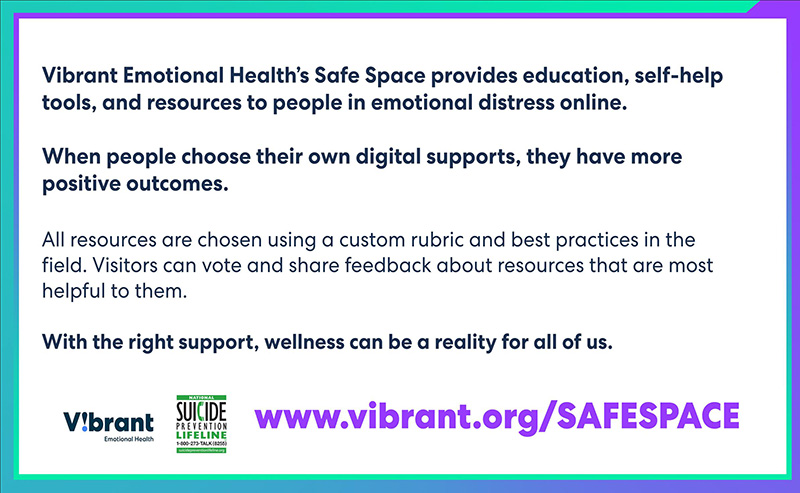As the COVID-19 pandemic swept the globe last year, collectively, mental health challenges were intensified. With the pandemic, a series of lockdowns, restrictions, and preventative measures were put in place, forcing many of us into isolation, primarily interacting in digital spaces. We’ve also seen high rates of unemployment, food instability, and other barriers to emotional health throughout the pandemic. Moreover, while coping with all of this, we’ve experienced civil unrest throughout our country. There has been a lot weighing on our society over the last year. Elevated rates of suicidal ideation, substance abuse (Czeisler et al., 2020), intimate partner violence (Evans et al., 2020), and child abuse (Lawson et al., 2020) taxed our already stressed support systems. Facing these obstacles, many have turned to the digital supports that are available. But how do these tools actually work?

Ting Ting Lee
Even prior to the COVID-19 pandemic, our increasingly digital world created interpersonal distance, with some people increasingly interacting solely through social media, texting, and online spaces. These digital spaces gradually adapted to address the mental health issues faced by users, offering ways to report concerning posts, online behavior, and offer support (National Suicide Prevention Lifeline, n.d.). These tools are available to meet a variety of needs and, unlike many traditional forms of mental health support, have the ability to always be accessible. But do they work?
In the years since online crisis and mental health support services have become more common, research studies have shown that digital tools can supplement existing support systems and intervene for those who would otherwise not seek out professional support. A meta-analysis on digital interventions for suicidal ideation and self-harm found the tools to be effective compared to non-intervention control groups (Witt et al., 2017). A 2019 study out of Australia found that digital tools that target suicide were effective in reducing suicidal ideation and, the fact that they were digital, made them critical in helping those that might not choose to seek face-to-face treatment (Torok et al., 2019).
Built in collaboration with the national advisory committees of the National Suicide Prevention Lifeline (Lifeline), Safe Space is home to resources and tools to provide users with extra support in an emotionally safe environment. The intent of the Safe Space is to: (a) provide additional help to persons utilizing Lifeline Crisis Chat or the Lifeline; (b) provide helpful resources for persons to engage while waiting for Lifeline counselors to assist them (either chat or calls); and/or (c) engage and assist individuals in distress who are visiting the Lifeline site but are not inclined to use either the Lifeline call or Crisis Chat service.
Evidence-based self-help and peer support resources collected with the guidance of a custom rubric have created a space where users can connect to support through Lifeline Crisis Chat, find digital coping tools, or use distraction tools (Kuchuk & Gonzalez, 2020). This unique rubric was designed to measure the potential impact of a digital resource, assessing the resources’ attributes on various categories of safety, best practices, interaction, and accessibility (Kuchuk, 2020).
Lifeline Chat is a service of the National Suicide Prevention Lifeline, connecting individuals with counselors for emotional support and other services via web chat. Available 24/7, Lifeline received over 91,000 chat visitors in the last month. Crisis Chat often reaches younger individuals discussing more intense subject matter who may not reach out for support otherwise (National Suicide Prevention Lifeline, 2020). Visitors to the Safe Space can utilize the tools available while waiting to speak with a chat counselor, much like a client awaiting a therapist in a quiet, calm waiting room. Since launching in March 2020, Safe Space has had over 190,000 visitors, with tens of thousands of users accessing resources every month.
The coping tools found on Safe Space include websites and apps connecting visitors to a host of coping, skills, and support for suicidal ideation and other mental health topics. Most of these tools provide a customizable experience for users to tailor to their own preferences and presenting issues. Through resources like the Virtual Hope Box, the Your Life Your Voice site, and the Now Matters Now site, visitors to the Safe Space can build coping plans and strategies to last them long after their interaction with the site.
An empirically validated component of CBT and DBT, distraction can help visitors in crisis gain control, decrease symptom severity, and help in grounding. The digital distraction tools on Safe Space range from soothing, interactive art creation with Silk (the top-rated resource on Safe Space) to simple breathing videos and ambient soundscapes in Calmsound. These distraction tools can be utilized while waiting to connect with a chat counselor on the Lifeline Chat service or revisited later when the same distressing feelings arise.
Providing connection and mental health support during a public health crisis requires an understanding and an ability to meet people’s needs, wherever they may be. As many are already active online, the Safe Space website is a prime example of the importance of offering digital support tools to address a variety of needs for users dealing with mental health challenges. Visitors to the site have praised its ability to deescalate their crisis state, sharing that “this immediately got my mind off of the negative thoughts I was having.” Others reported that “this helped me off the ledge several times while waiting for a helpline” and noting that the site “was very soothing for my mental and physical wellbeing.”
If you are interested in connecting yourself or linking others to Safe Space, please visit www.Vibrant.org/SafeSpace.
For immediate support in a crisis for yourself or someone you know, call the National Suicide Prevention Lifeline at 1-800-273-8255 (TALK).
Ting Ting Lee, M.A., may be reached at TiLee@Vibrant.org.
References
Czeisler, M. E., Lane, R. I., Petrosky, E., Wiley, J. F., Christensen, A., Njai, R., Weaver, M. D., Robbins, R., Facer-Childs, E. R., Barger, L. K., Czeisler, C. A., Howard, M. E., & Rajaratnam, S. M. W. (2020). Mental health, substance use, and suicidal ideation during the COVID-19 pandemic – United States. Morbidity and Mortality Weekly Report, 69(32), 1049-1057. https://www.cdc.gov/mmwr/volumes/69/wr/mm6932a1.htm
Evans, M. L., Lindauer, M., & Farrell, M. E. (2020). A pandemic within a pandemic – Intimate partner violence during Covid-19. The New England Journal of Medicine, 383, 2302-2304. https://www.nejm.org/doi/full/10.1056/NEJMp2024046
Kuchuk, M. (2020, May 7). Offering a Safe Space. Lifeline Crisis Centers. https://medium.com/@CrisisCenters/offering-a-safe-space-1647fe899248
Kuchuk, M. & Gonzalez, F. (2020). Digital tools to help ourselves and each other. Vibrant Annual Report 2020. https://annualreport2020.webflow.io/digital-support
Lawson, M., Piel, M. H., & Simon, M. (2020). Child maltreatment during the COVID-19 pandemic: Consequences of parental job loss on psychological and physical abuse towards children. Child Abuse & Neglect, 110(2), 104709. https://doi.org/10.1016/j.chiabu.2020.104709
National Suicide Prevention Lifeline (n.d.). Support on Social Media. https://suicidepreventionlifeline.org/help-someone-else/safety-and-support-on-social-media/
Torok, M., Han, J., Baker, S., Werner-Seidler, A., Wong, I., Larsen, M. E., & Christensen, H. (2019) Suicide prevention using self-guided digital interventions: a systematic review and meta-analysis of randomised controlled trials. The Lancet Digital Health, 2(1), 25-36. https://doi.org/10.1016/S2589-7500(19)30199-2
Witt, K., Spittal, M. J., Carter, G., Pirkis, J., Hetrick, S., Currier, D., Robinson, J., & Milner, A. (2017) Effectiveness of online and mobile telephone applications (‘apps’) for the self-management of suicidal ideation and self-harm: a systematic review and meta-analysis. BMC Psychiatry, 17, 297. https://doi.org/10.1186/s12888-017-1458-0





